This article was co-authored by Lisa Bryant, ND and by wikiHow staff writer, Hunter Rising. Dr. Lisa Bryant is Licensed Naturopathic Physician and natural medicine expert based in Portland, Oregon. She earned a Doctorate of Naturopathic Medicine from the National College of Natural Medicine in Portland, Oregon and completed her residency in Naturopathic Family Medicine there in 2014.
There are 14 references cited in this article, which can be found at the bottom of the page.
wikiHow marks an article as reader-approved once it receives enough positive feedback. This article received 19 testimonials and 100% of readers who voted found it helpful, earning it our reader-approved status.
This article has been viewed 581,396 times.
Edema, or oedema, occurs when excess fluids get trapped in your body tissue and make an area swollen. While you normally get edema in your hands, feet, or legs, you may experience it anywhere on your body. You may have edema temporarily from an injury or pregnancy, but it may last longer if it’s from a serious underlying condition. While it can be irritating or painful when you have edema, there are a few ways you can help the swelling go down without medication. However, if your edema doesn’t go away or if you have persistent pain, schedule an appointment with your doctor to have it checked out.
Steps
Minimizing Fluid Buildup
-
1Walk around for a few minutes every hour. Avoid sitting or standing in the same place for an extended period of time since it can cause fluid to pool inside your body and increase your swelling. Get up to stretch your legs and take a brief walk for 3–4 minutes at least once an hour if you’re able to. As long as you move around frequently, your edema will look less inflamed and feel less painful.[1]
- Avoid crossing your legs while you’re sitting since it can restrict blood flow and worsen your edema.
Variation:If you’re traveling and you’re unable to stand up, try flexing your leg muscles and shifting your position frequently.[2]
-
2Massage the affected area toward your heart. Place your hand on the side of your edema that’s furthest from your heart. Apply as much pressure to the swollen area as you can without hurting yourself. Move your hand over your edema, rubbing in the direction toward your heart to keep the fluid in your body flowing properly.[3]
- For example, if you have edema in your feet, start massaging from your toes and work toward your ankle.
Advertisement -
3Elevate the swollen area above your heart for 30 minutes at a time. Lie on your back if you can so it’s easier to raise the swollen area higher than your heart. Prop up the area where you have edema with pillows or a cushion so blood and fluids drain away from it. If possible, keep the swollen area elevated for around 30 minutes about 3–4 times daily.[4]
- If you’re experiencing edema in your arms or hands, raise them straight above your head for about 1–2 minutes at a time to help drain the fluid. Lift your arms once every hour for continued relief.
-
4Wear compression garments if you want to prevent further swelling. Choose a compression garment, such as a sleeve, stocking, or glove, that applies moderate amounts of pressure when you wear it. Put the garment on as soon as you wake up in the morning and keep wearing it as long as you’re able to tolerate it, which may be a few hours or all day. You can wear compression garments every day to help manage and prevent edema.[5]
- Avoid wearing compression garments that are too tight since they can irritate your skin.
- Compression garments apply even pressure on the affected area to prevent fluid from building up.
Managing Pain
-
1Apply a cold compress if you have swelling from an injury. You can use either a damp cloth or an ice pack for your cold compress. Put the compress against your swelling and apply firm pressure to help reduce the size of the edema. Keep the compress tight against your skin for 20 minutes at a time whenever you feel pain or want immediate relief. You can use a cold compress once every hour.[6]
- Avoid keeping ice on your skin for more than 20 minutes since you could give yourself frostbite.
- Cold compresses help reduce inflammation so your edema doesn’t feel as painful.
-
2Put on loose-fitting clothing to reduce pressure on the swollen area. Avoid wearing clothes that are tight against your skin since they can put stress on your edema and make it feel painful. Choose clothing that fits comfortably and doesn’t restrict your range of motion, such as sweatpants and baggy sweatshirts. If you have edema in your feet, pick wider shoes and tie the laces loosely so they’re less likely to cause pain.[7]
- If tight clothing rubs against your edema over extended periods of time, you may develop irritation.
-
3Soak the swollen area in an Epsom salt bath to ease pain. Run warm water in your bath and add 2 cups (200 g) of Epsom salt. Let the Epsom salt dissolve in the water completely before getting in your tub. Keep the swollen area submerged for around 15–20 minutes so you can get relief from any aches or pains you’re feeling.[8]
- You can buy Epsom salt online or from your local drugstore.
- Epsom salt breaks into magnesium and sulfate that absorbs into your skin and helps alleviate pain.
-
4Take magnesium supplements to manage water retention and pain. Choose a supplement that has around 200–400 mg of magnesium for the best effects. Take your supplement in the morning every day since it can help reduce your pain and limit your water retention, which helps reduce the size of your edema.[9]
- Always talk to your doctor before starting a new supplement to make sure it doesn’t interfere with other medications you’re taking.
- Magnesium helps your body reduce nerve pain, so it may help with your edema.[10]
Warning: Avoid taking magnesium supplements if you have a kidney or heart condition.
-
5Try applying lavender essential oil for a natural anti-inflammatory. Mix 2–3 drops of the lavender oil with 1 tablespoon (15 ml) of a carrier, such as olive, avocado, or almond oil. Gently rub the oil into your skin where you’re swollen until it absorbs into your body. Keep applying the oil once or twice daily to help reduce your swelling and ease your pain.[11]
- Lavender is an antioxidant and has been shown to reduce and prevent edema.
- You may also try peppermint, eucalyptus, or chamomile oil as well.[12]
Adjusting Your Diet and Lifestyle
-
1Switch to a reduced-sodium diet to help control your fluid retention. Since salt causes fluid to stay in your body and increases the size of your edema, avoid processed foods, meats, soups, and snack foods. Instead, opt for whole grains, unsalted snacks, fresh fruits and vegetables, or fresh meat. Check the nutritional label and limit yourself to the recommended portion size for your meal. If possible, opt for low-sodium items so you don’t consume as much salt.[13]
- Rather than using salt to season your food, opt for different herbs, spices, or even lemon juice to add new flavors to your dishes.
- If you’re going out to eat, ask them to prepare your food without salt and get condiments on the side.
Warning: Some medications also contain sodium, so check their labels before taking them. If you have a prescription, talk to your doctor to see if there are any alternatives.[14]
-
2Drink water throughout the day so you stay hydrated. Even though edema is caused by fluid buildup, water helps flush the affected area and removes excess fluid. Try to have about 8 glasses of water spread throughout the day that are 8 fluid ounces (240 ml) each. Do your best to avoid drinks that have caffeine or sugar since they can dehydrate you more.[15]
- Many sports drinks have a high sodium content, so avoid having them.
-
3Avoid drinking and smoking while you have edema. Limit the amount of alcohol or smoking of any kind since it stresses your body and can make you feel more dehydrated. Wait until your edema goes down or heals completely before you start drinking or smoking again, or else you may feel more pain or increase the size of the swollen area.[16]
- Smoking and drinking can limit the nutrients getting to the edema and may cause it to get worse.
-
4Incorporate light exercise into your daily routine to improve blood flow. Aim to be active for around 4–5 days each week for at least 30 minutes at a time. Try walking, jogging slowly, swimming, or lifting light weights since they won’t stress your body out as much. As you get more comfortable with light exercises, try increasing the intensity or weight you’re using to help relieve pain even more.[17]
- Light exercise allows oxygen and nutrients to reach the affected area so it’s able to heal faster.
- If you feel a lot of pain from your edema, talk to your doctor about what exercises will work best for you.
-
5Keep the swollen area protected and moisturized so you don’t get injured. Rub a moisturizing cream or lotion into the affected area 2–3 times each day so your skin doesn’t dry out. Be mindful of the activities you’re doing so you don’t hurt yourself or get injured where you have swelling. If possible, try to keep the area covered with clothing so you’re less likely to cut or scrape it.[18]
- If you have dry skin, you’re more prone to injury and it may take longer for you to recover.
When to Seek Medical Care
-
1Talk to your doctor if your edema is severe. Severe edema can be a symptom of a more serious underlying condition. If you have severe swelling in any part of your body, set up an appointment with your doctor. They can help you identify what’s causing the problem and treat it appropriately. You should seek medical attention if:[19]
- You have skin that is swollen, stretched, or shiny looking
- Your skin stays dimpled or indented for a moment after you push on it
- You are pregnant and you experience sudden swelling in your hands or face[20]
-
2Call your doctor right away if you have leg swelling with pain. If you experience persistent swelling and pain in your leg after sitting for a long time, you may have a blood clot. This condition can be dangerous if left untreated. Call your doctor immediately or go to urgent care if you have symptoms of a blood clot in your leg.[21]
- The affected part of your leg may also be red or feel warm to the touch.
Warning: A blood clot in your vein can come loose and travel into your lung, causing a life-threatening condition called a pulmonary embolism. Go to the emergency room or call emergency services if you experience sudden shortness of breath, chest pain when you breathe, dizziness, a fast heartbeat, or a cough that brings up blood.
-
3Seek emergency care for symptoms of pulmonary edema. Pulmonary edema is a type of edema in which fluid builds up in the lungs. This can be a life-threatening condition, especially if it comes on suddenly. Call emergency services or ask someone to drive you to the emergency room if you have symptoms of pulmonary edema, such as:[22]
- Wheezing, difficulty breathing, or sudden shortness of breath
- A cough with pink or frothy sputum
- Heavy sweating
- Grey or bluish skin
- Confusion, lightheadedness, or dizziness
Warnings
- If your swelling lasts for longer than 2 weeks, contact your primary care provider to determine the underlying cause of the edema.[23]⧼thumbs_response⧽
- Always talk to your doctor before starting any natural treatments or supplements to ensure they don’t have negative interactions.⧼thumbs_response⧽
- If you experience severe headaches, confusion, neck pain, or blurred vision, it could be a sign of brain edema. You should seek the help of a doctor and take the necessary medication to reduce the swelling.⧼thumbs_response⧽
References
- ↑ https://health.clevelandclinic.org/6-best-ways-relieve-swollen-feet-ankles-home/
- ↑ https://www.mayoclinic.org/foot-swelling/expert-answers/faq-20057828
- ↑ https://www.mayoclinic.org/diseases-conditions/edema/diagnosis-treatment/drc-20366532
- ↑ https://www.mayoclinic.org/diseases-conditions/edema/diagnosis-treatment/drc-20366532
- ↑ https://health.clevelandclinic.org/6-best-ways-relieve-swollen-feet-ankles-home/
- ↑ https://medlineplus.gov/ency/article/003105.htm
- ↑ https://www.nhs.uk/conditions/oedema/
- ↑ https://health.clevelandclinic.org/6-best-ways-relieve-swollen-feet-ankles-home/
- ↑ https://health.clevelandclinic.org/6-best-ways-relieve-swollen-feet-ankles-home/
- ↑ https://www.ncbi.nlm.nih.gov/books/NBK507245/
- ↑ https://www.ncbi.nlm.nih.gov/pmc/articles/PMC5878871/
- ↑ https://health.clevelandclinic.org/6-best-ways-relieve-swollen-feet-ankles-home/
- ↑ https://www.mayoclinic.org/diseases-conditions/edema/diagnosis-treatment/drc-20366532
- ↑ https://www.uptodate.com/contents/low-sodium-diet-beyond-the-basics?topicRef=4413&source=see_link
- ↑ https://health.clevelandclinic.org/6-best-ways-relieve-swollen-feet-ankles-home/
- ↑ https://my.clevelandclinic.org/health/diseases/12564-edema/management-and-treatment
- ↑ https://www.nhs.uk/conditions/oedema/
- ↑ https://my.clevelandclinic.org/health/diseases/12564-edema/management-and-treatment
- ↑ https://www.mayoclinic.org/diseases-conditions/edema/symptoms-causes/syc-20366493
- ↑ https://americanpregnancy.org/pregnancy-health/swelling-during-pregnancy/
- ↑ https://www.mayoclinic.org/diseases-conditions/edema/symptoms-causes/syc-20366493
- ↑ https://www.mayoclinic.org/diseases-conditions/pulmonary-edema/symptoms-causes/syc-20377009
- ↑ https://www.ncbi.nlm.nih.gov/pmc/articles/PMC5300735/
About This Article
Edema, which is a form of swelling caused by excess fluids in your body’s tissues, can be reduced through lifestyle changes and natural remedies. While it might seem counterintuitive, drink more water every day to reduce edema. Drinking more water will flush the excess fluids from your body. Additionally, don’t add table salt to food, avoid processed foods, and focus on eating whole foods that you make yourself since salt can lead to water retention. Another way to address edema is to keep your feet up while you’re sitting and to walk around every hour or so to lessen the swelling in your legs or feet. To learn how to give yourself a water massage to help control your edema, keep reading!
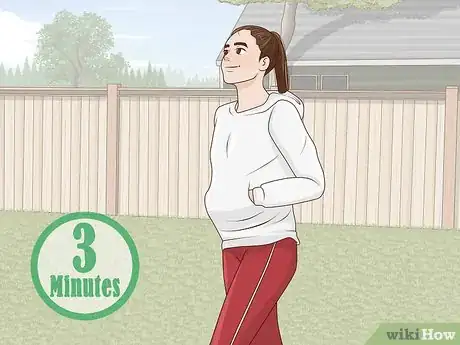
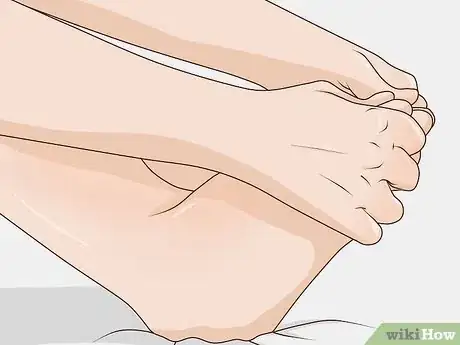
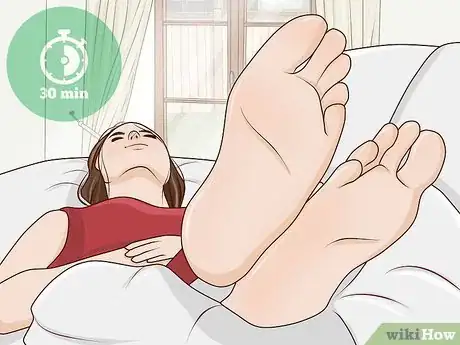
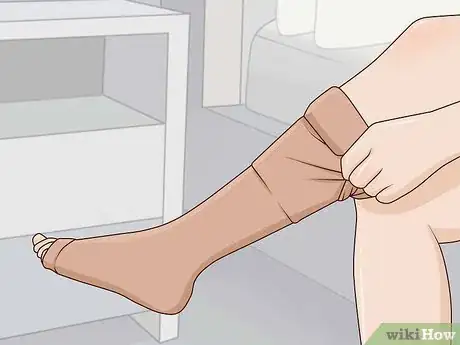
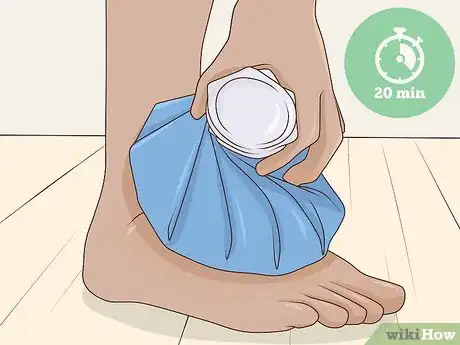
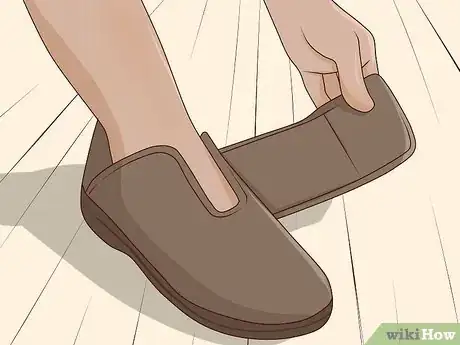


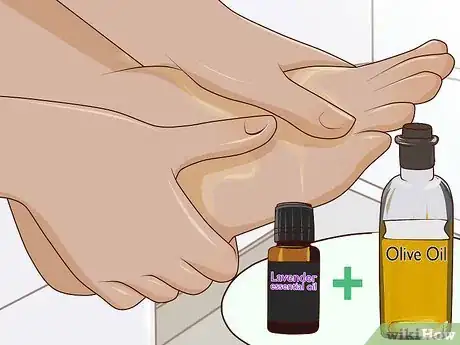
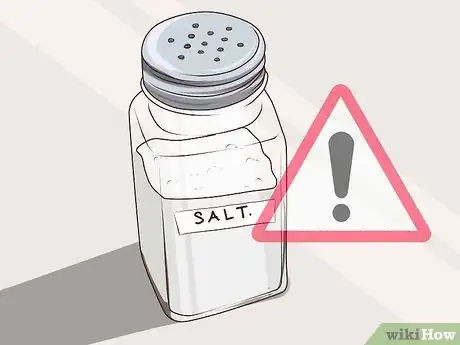

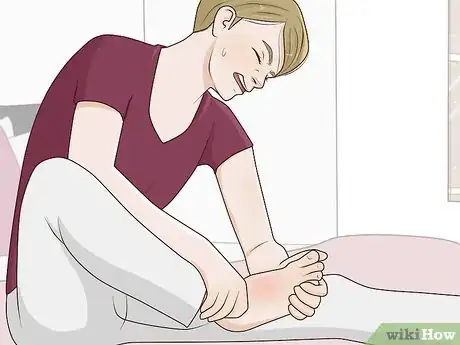
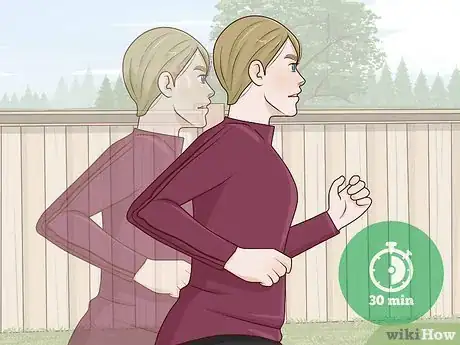
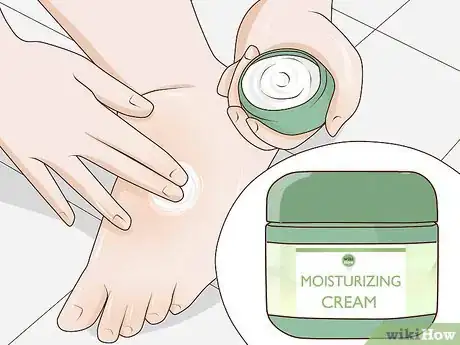
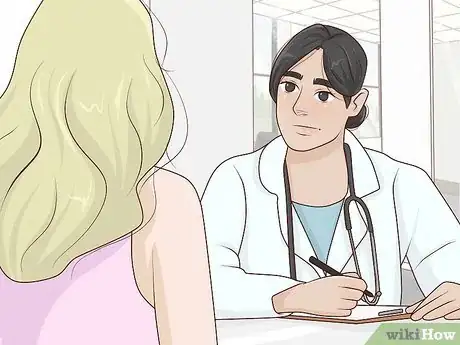
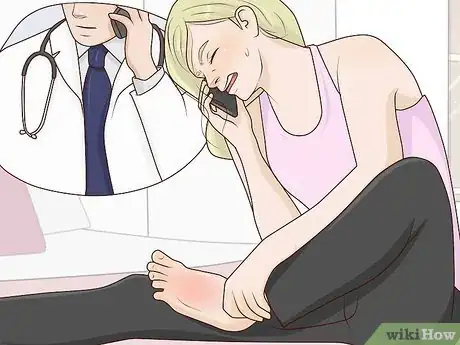
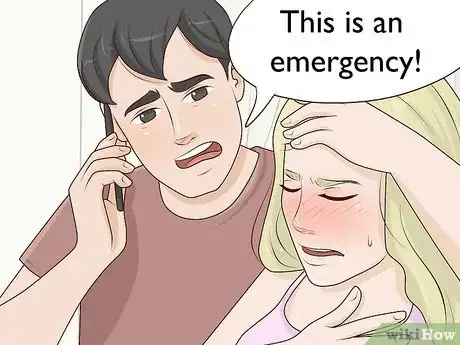
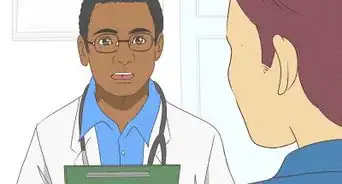
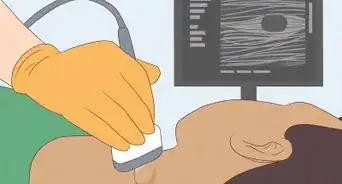
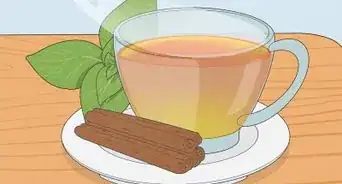
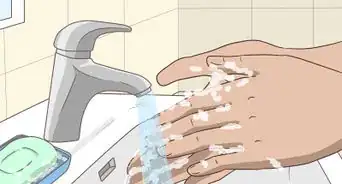

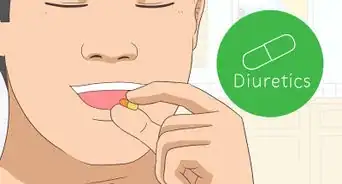
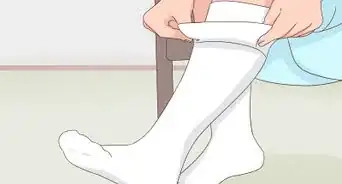
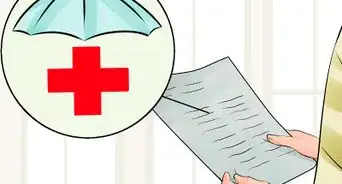
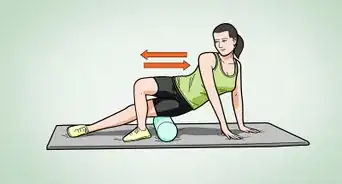

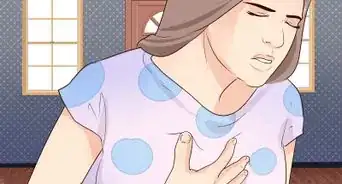
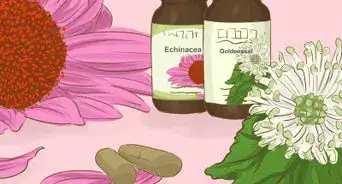
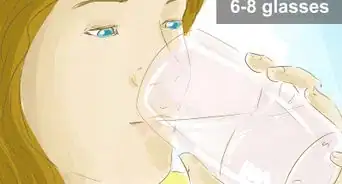
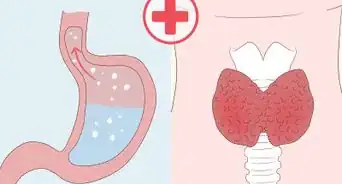











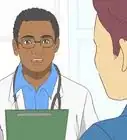


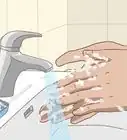




































Medical Disclaimer
The content of this article is not intended to be a substitute for professional medical advice, examination, diagnosis, or treatment. You should always contact your doctor or other qualified healthcare professional before starting, changing, or stopping any kind of health treatment.
Read More...